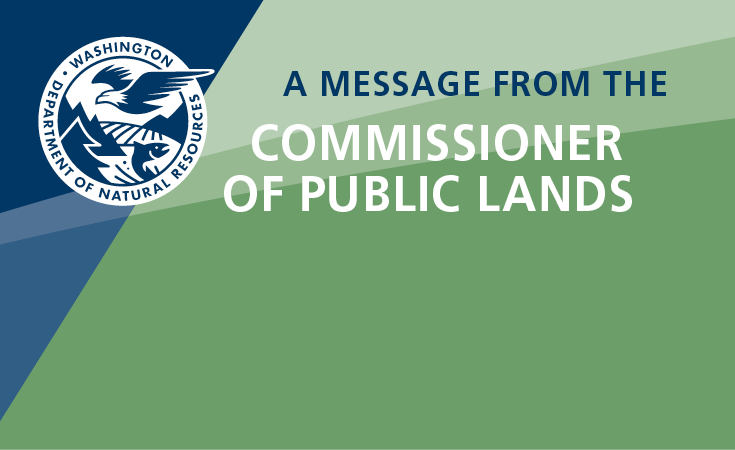Tree Mortality Attributed to Douglas-fir Engraver Reaches 55-Year High in Annual Forest Health Highlights
News Date:
May 9, 2024
Annual DNR and Forest Service report also includes first pine mortality attributed to California Fivespined Ips beetle in western Washington
The Washington State Department of Natural Resources released its annual Forest Health Highlights report on Wednesday following a 2023 aerial detection survey that mapped 517,000 acres of forests with some level of tree mortality, defoliation, or foliar diseases.
Surveyors from the Department of Natural Resources (DNR) and the USDA Forest Service gathered data and observed approximately 22 million forested acres across Washington on a series of low-altitude flights conducted each year since 1947, other than when the COVID-19 pandemic grounded the survey in 2020.
Though the 2023 Forest Health Highlights report documents the fewest acres affected as part of a complete survey since 2018, it also contains several concerning trends and new data points underscoring the forest health crisis in Washington.
“The Annual Forest Health Highlights report is one of the most comprehensive resources available each year for everyone to understand the magnitude of the challenges our forests face from increasing heat, drought, and wildfires,” said Commissioner of Public Lands Hilary Franz. “I encourage all landowners and land managers to use it as a resource as we work together to keep the Evergreen State evergreen for future generations.”
One of the most concerning datapoints within the Forest Health Highlights comes courtesy of the Douglas-fir engraver. Scientists mapped 25,600 acres of tree damage attributed to this bark beetle – the largest amount recorded by an aerial survey in Washington since 1969 and nearly 20 percent more than the 20,300 acres observed in 2019.
Douglas-fir engraver damage signatures such as dead tops and branch flagging are also caused by a second bark beetle (Scolytus monticolae) and by Douglas-fir pole beetle. All three species are considered secondary bark beetles because are not typically the primary cause of death for otherwise healthy trees. Rather, they take advantage of trees already stressed other factors like excess heat and drought.
Increased rates of drought and excess heat are also the likely driver behind the expansion of California Fivespined Ips beetle (CFI) up into the Puget Sound region. Prior to 2022, CFI-caused mortality in pine trees was historically limited in Washington to the Columbia River Gorge. A scientist from the Forest Service determined ponderosa pine mortality at Joint Base Lewis-McChord in July 2022 to be the work of CFI – the first known occurrence in western Washington.
Since then, scientists have recorded CFI-caused mortality in pine trees up through King County. Trap sites in western Washington north of Vancouver historically captured fewer than 10 CFI each season, with no recorded mortality, but are now attracting the beetles by the hundreds in Renton and Bothell. Localized outbreaks in Skamania, Klickitat, and Benton counties are causing unusually high levels of ponderosa pine mortality.
“We know that heat and drought are two of the most prominent areas of concern for forest health throughout Washington,” said DNR entomologist Glenn Kohler. “While we cannot say for sure if those factors led to some of our findings last year, we did expect to start seeing the effects of recent extreme weather events, like the 2021 heat dome, on our forests.”
According to the U.S. Drought Monitor, all of western Washington ranged from moderate to extreme drought condition by late September of last year, while all forested areas of eastern Washington were in abnormally dry to severe drought conditions.
The symptoms of drought stress in trees are often amplified during summers marked by below-average precipitation and above-average temperatures. This also makes the trees less likely to recover from injuries incurred in 2023, which could lead to tree mortality in drought-prone forests this year.
###
MEDIA RESOURCES
###
MEDIA CONTACT
Communications Manager
360-902-1000


